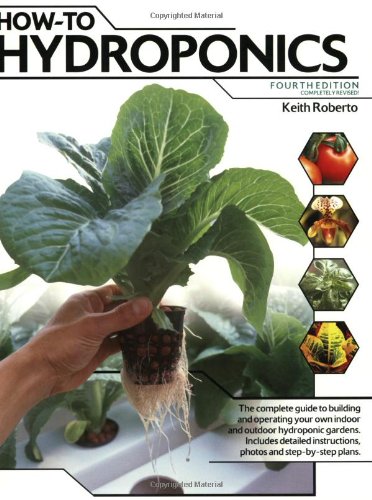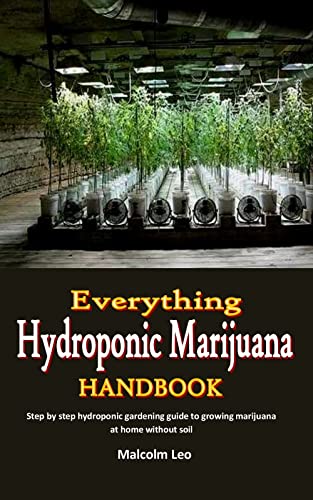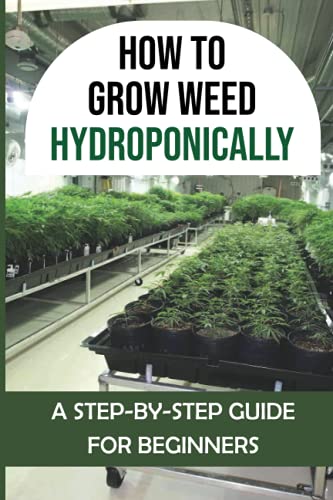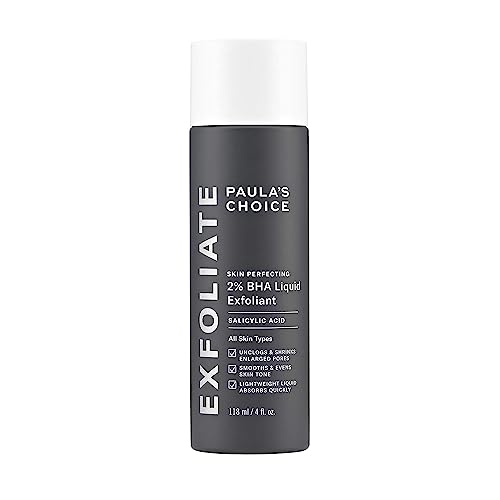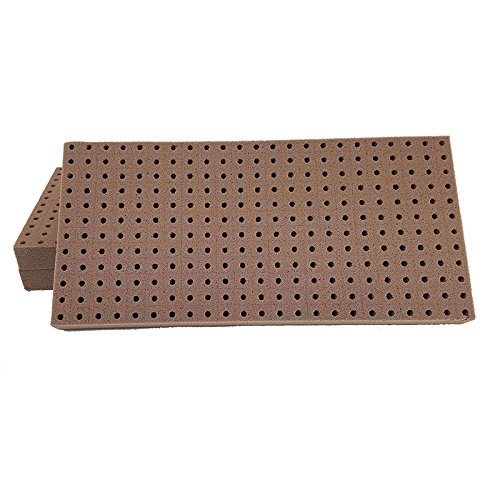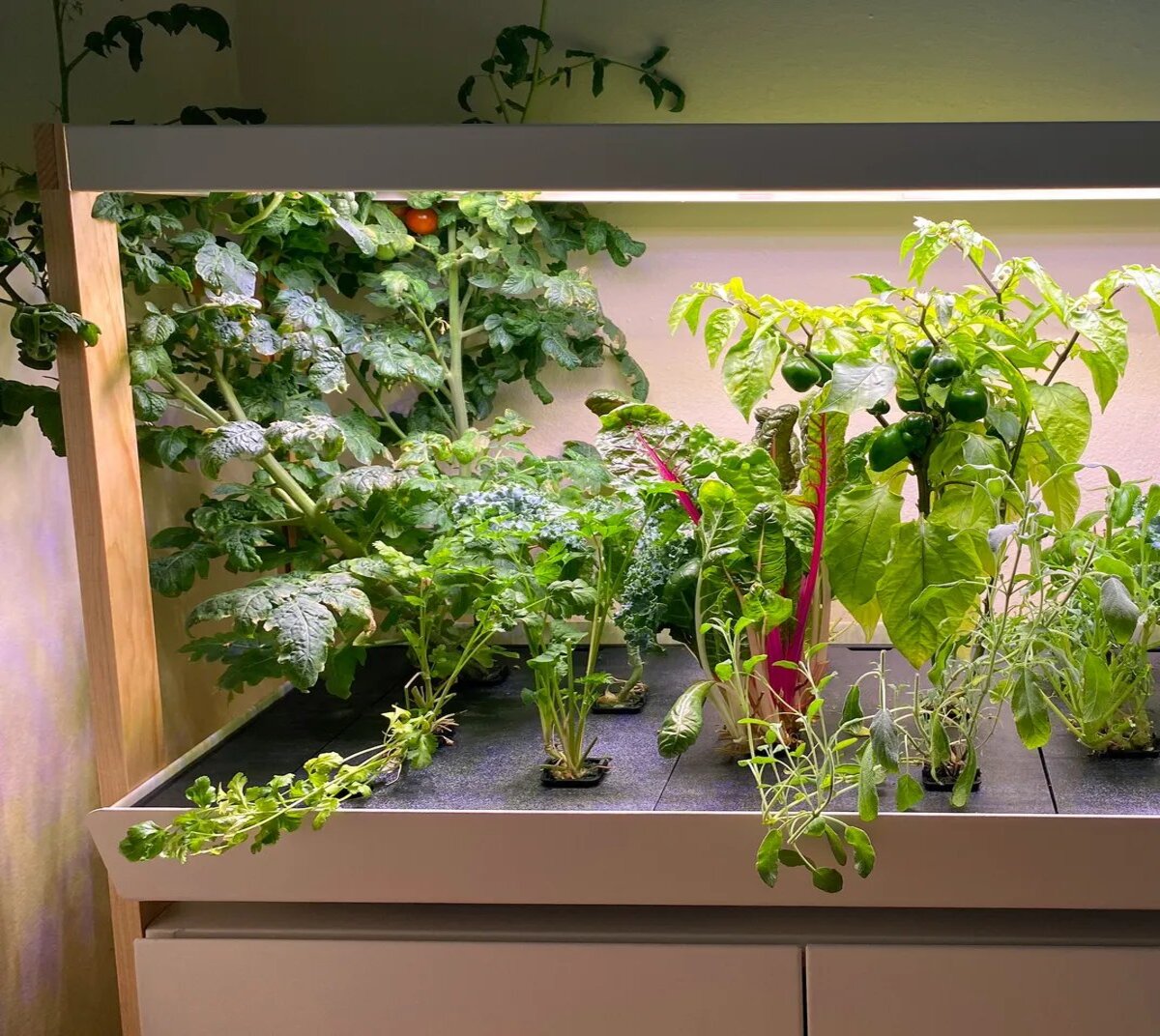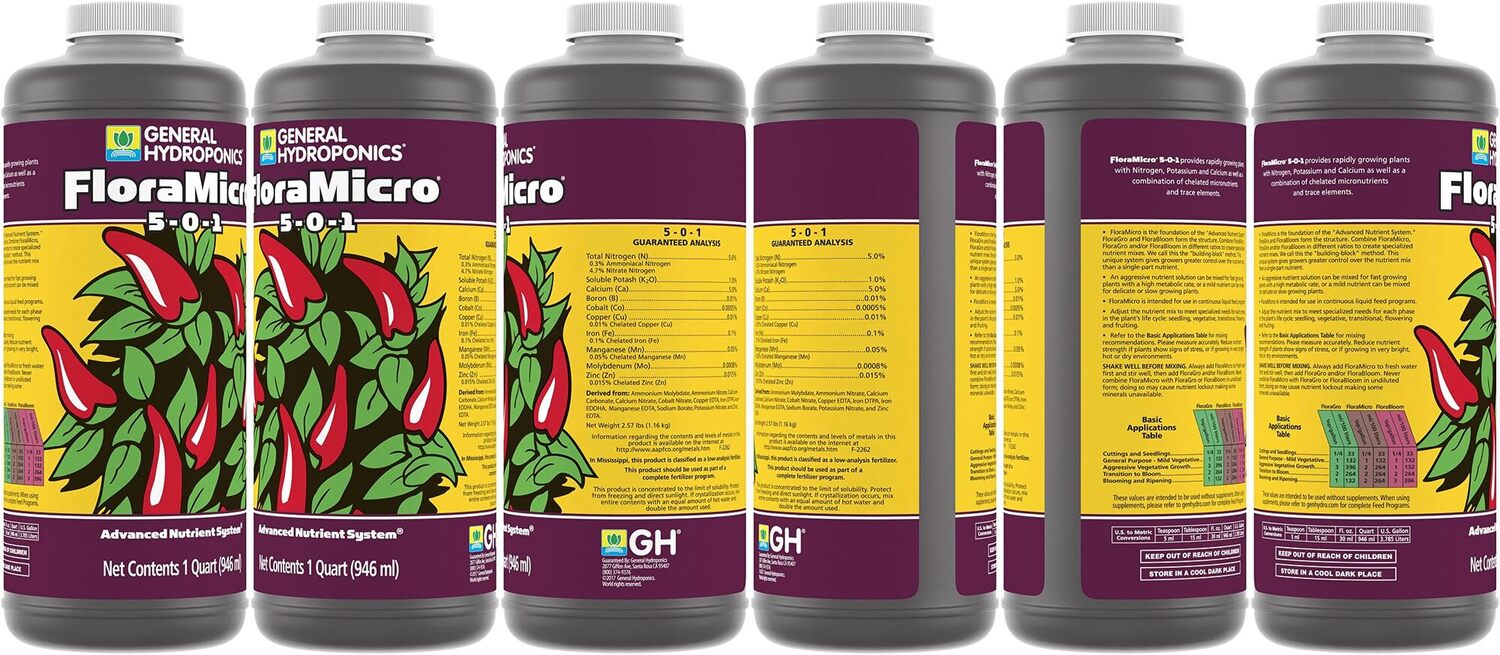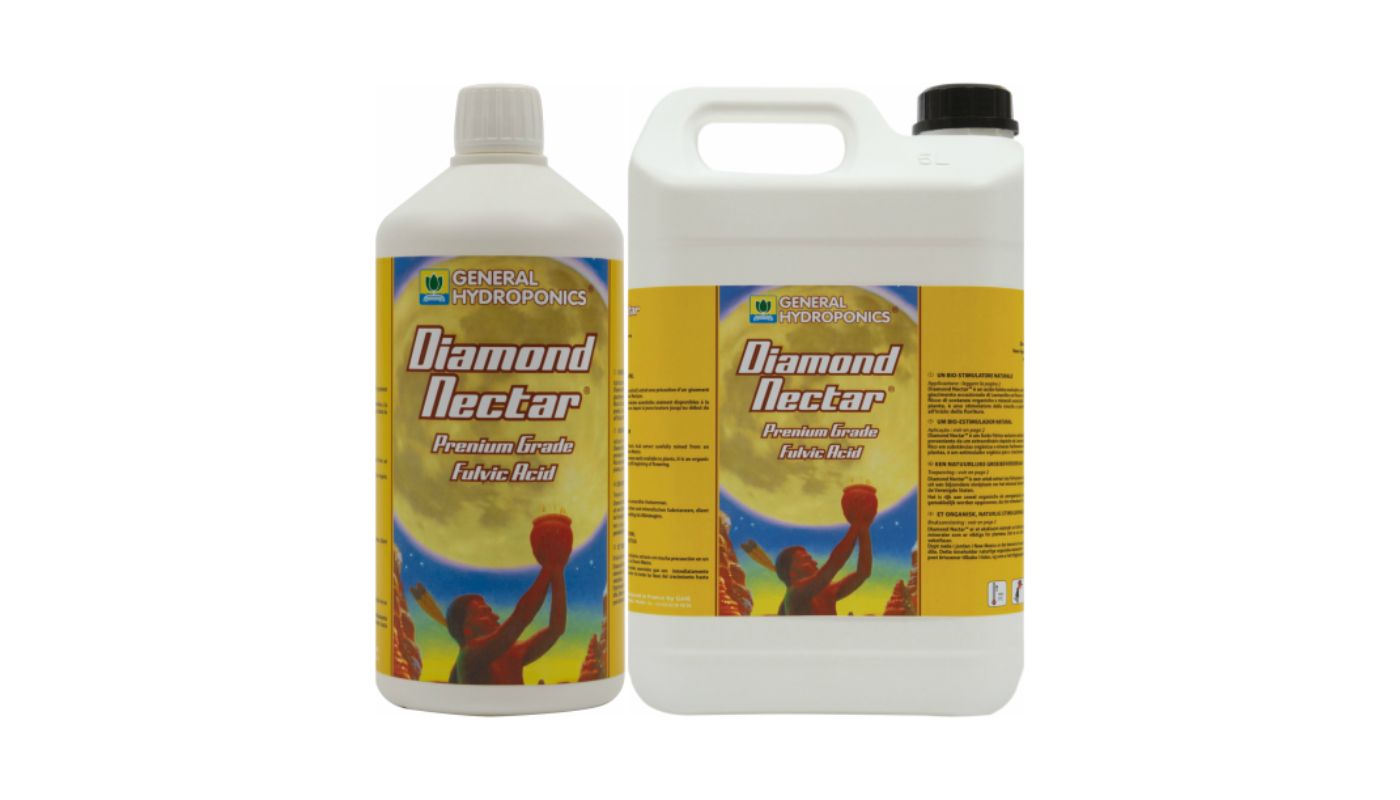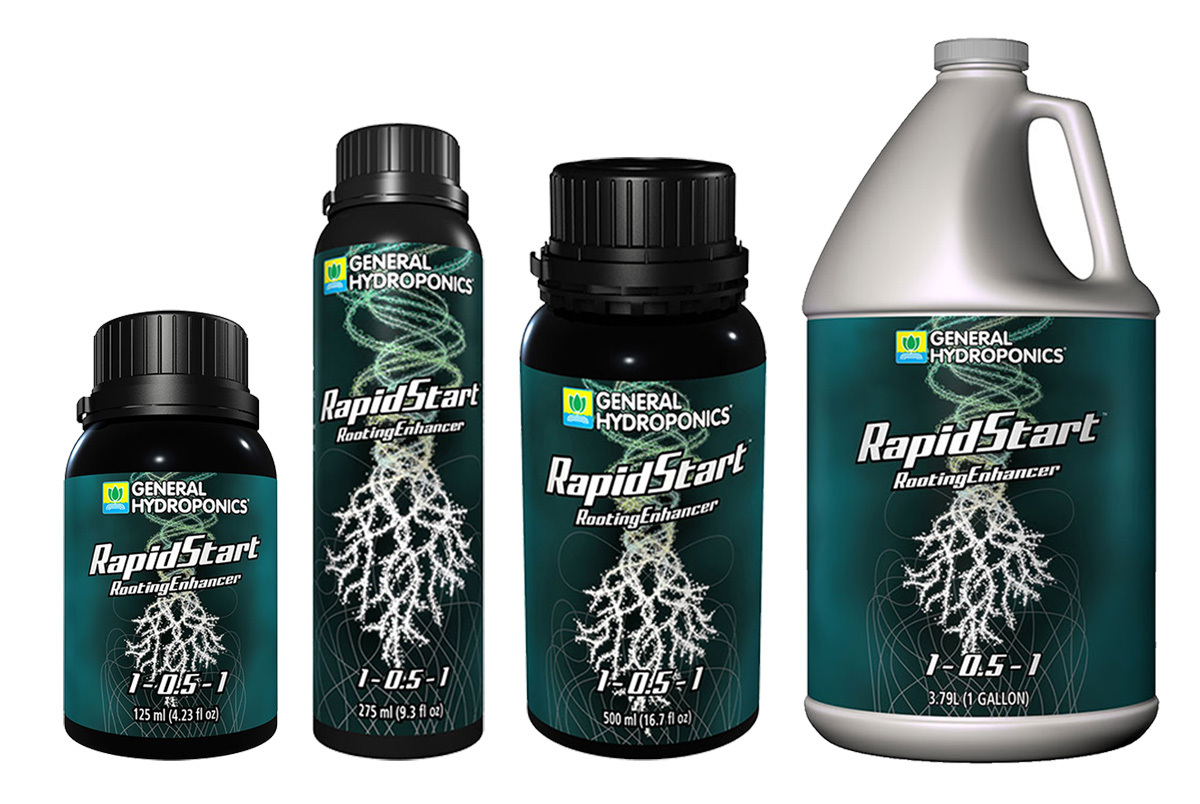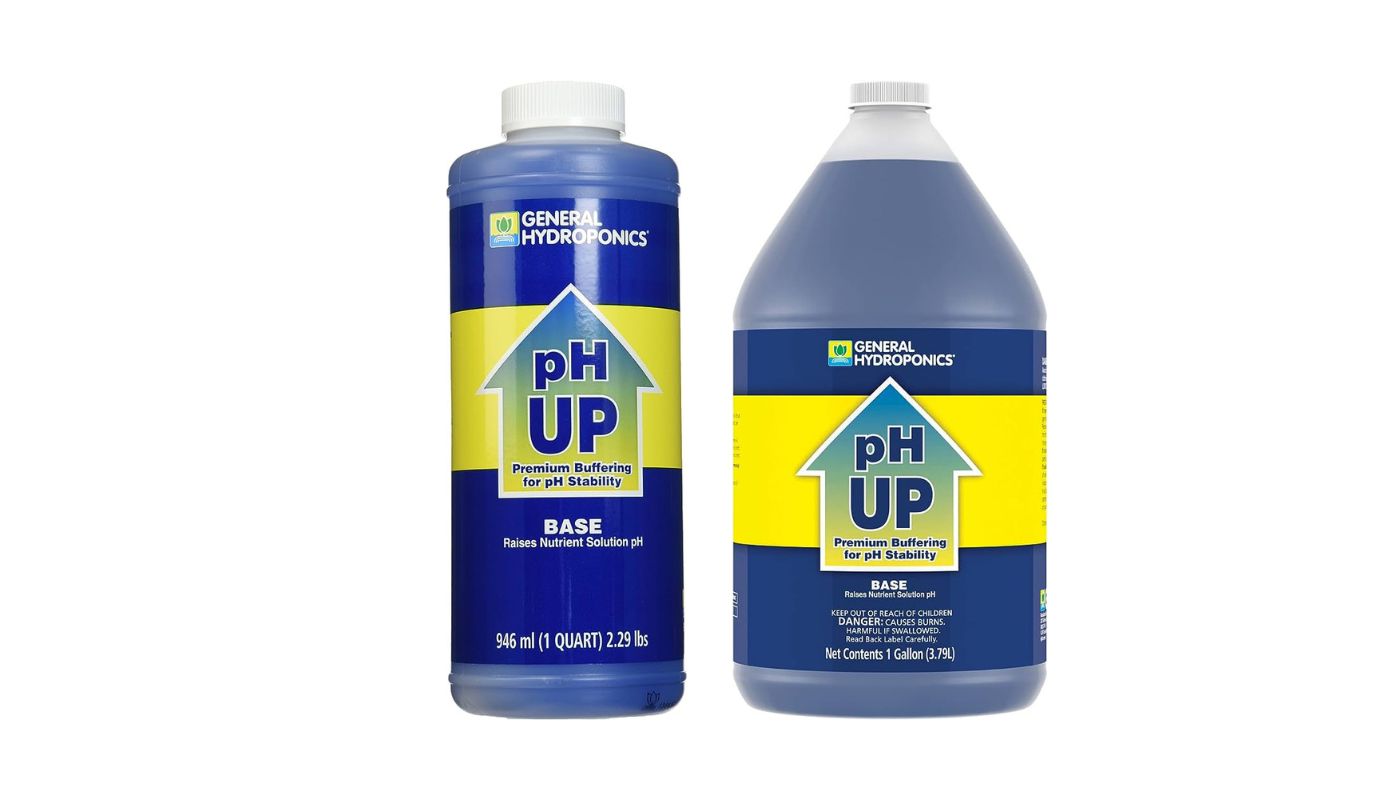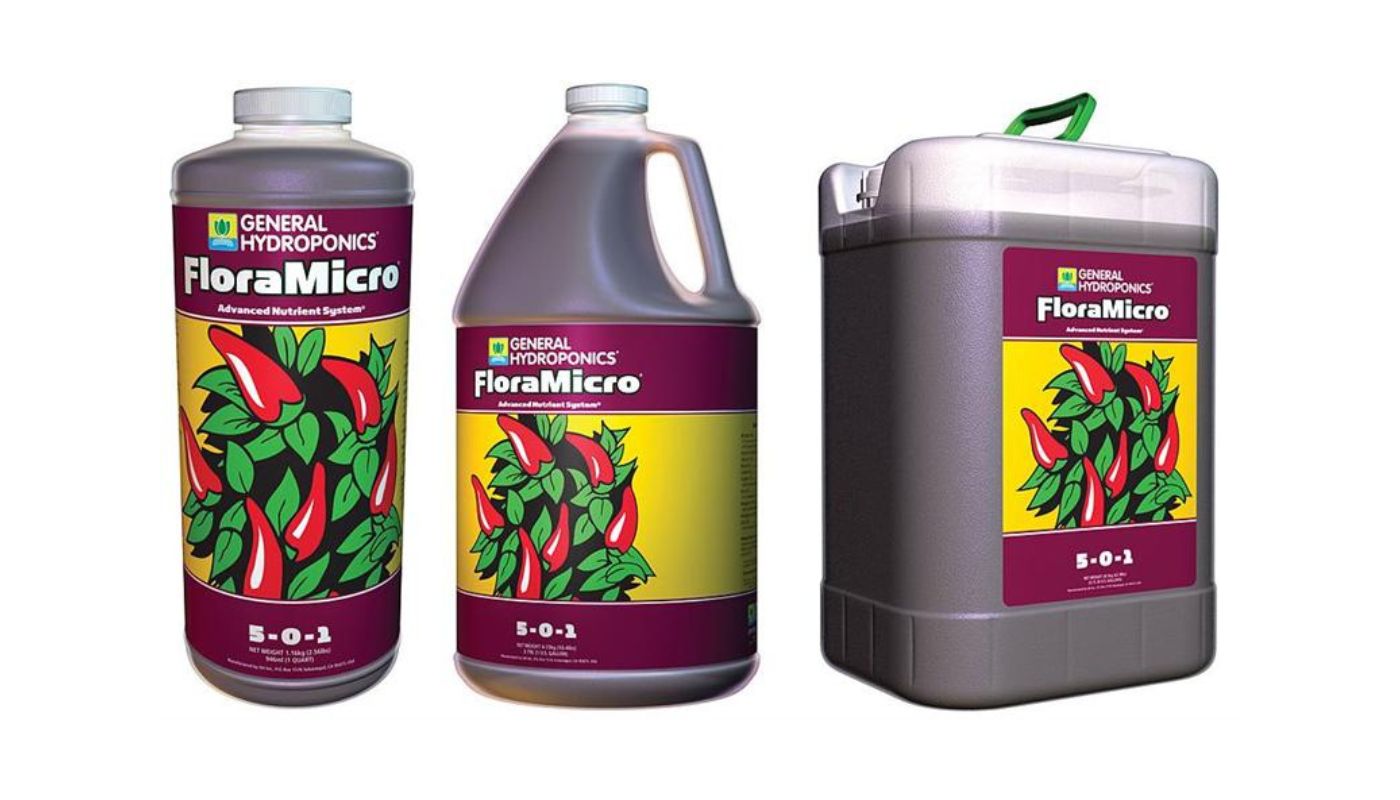Home>Reviews>Product Reviews>8 Amazing How To Do Hydroponics Products For 2024
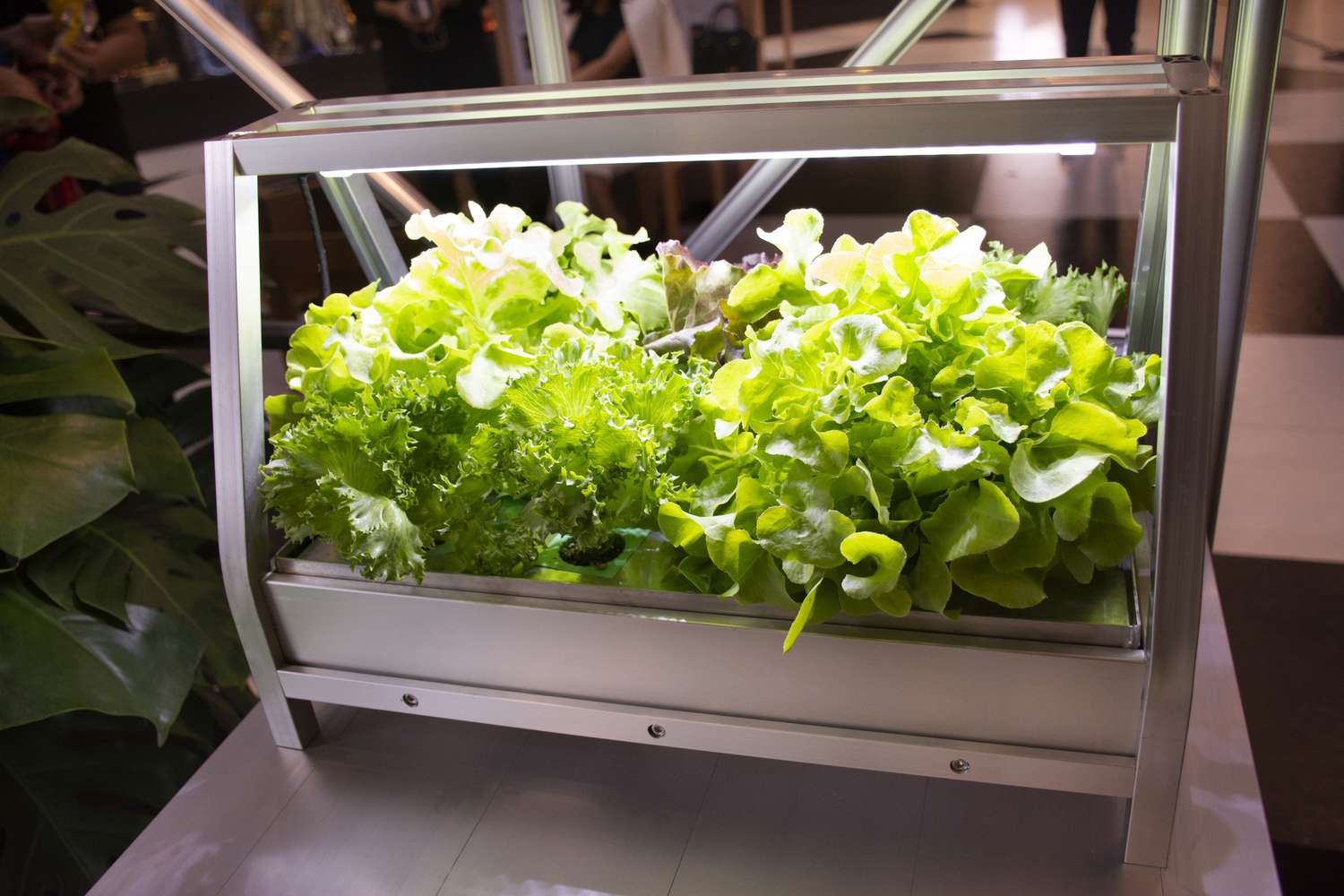

Product Reviews
8 Amazing How To Do Hydroponics Products For 2024
Modified: October 18, 2023
Learn how to hydroponics with these amazing tips and techniques for 2023. Start growing your own plants in a sustainable and efficient way!
(Many of the links in this article redirect to a specific reviewed product. Your purchase of these products through affiliate links helps to generate commission for Chicagolandgardening.com, at no extra cost. Learn more)
Introducing 8 Amazing How To Hydroponics for 2023: Exploring Innovative Techniques for Optimal Plant Growth. In the ever-evolving world of hydroponics, staying up-to-date with the latest methods and technologies is essential for successful cultivation. This comprehensive guide brings you the most cutting-edge hydroponic techniques for the upcoming year, providing a wealth of knowledge for both beginners and experienced growers alike. Whether you aim to grow luscious vegetables, vibrant flowers, or exotic herbs, this collection of hydroponic how-tos will empower you to achieve remarkable results. From nutrient management to lighting systems, this invaluable resource will equip you with the tools and insights necessary to thrive in the exciting realm of hydroponics.
Overall Score: 8/10
Looking for a comprehensive guide to hydroponics? The How-To Hydroponics, Fourth Edition is a must-have for gardening enthusiasts. This book provides detailed information on various hydroponic systems and their benefits, as well as instructions on building your own system. It covers everything from system plans to organic fertilizer recipes and pH regulation. Whether you’re a beginner or an experienced indoor gardener, this book offers valuable insights and tips. The only drawback is the lack of information on the latest LED lighting. With easy-to-understand instructions and helpful visuals, this book is a valuable resource for anyone interested in hydroponics.
Key Features
- Great gardening literature from Hydrofarm.
- Have questions about growing? Call Flora Hydroponics today!
Specifications
- Dimension: 8.50Lx0.50Wx11.00H
Pros
- Provides detailed system plans for DIY enthusiasts
- Includes recipes for organic fertilizer and p H regulation
- Easy-to-understand instructions and visuals
Cons
- Lacks information on the latest LED lighting
- Some pictures in black/white print, making them unclear
The How-To Hydroponics, Fourth Edition is a comprehensive and informative guide for hydroponic gardening. It covers different systems, provides detailed instructions for DIY enthusiasts, and offers helpful tips and recipes. While it lacks information on the latest LED lighting, the book compensates with its easy-to-understand language and visuals. Whether you’re a beginner or experienced indoor gardener, this book is a valuable resource that will save you money, headaches, and maybe even some crops! It’s a must-have for anyone interested in hydroponics.
Overall Score: 8/10
Are you interested in growing marijuana at home? The Everything Hydroponic Marijuana Handbook is the ultimate step-by-step guide for hydroponic gardening. This guide provides all the information you need to grow marijuana without soil, using the efficient hydroponic system. Whether you’re a beginner or experienced gardener, this book offers valuable insights and techniques to help you achieve successful results. From setting up your hydroponic system to choosing the right strains and managing pests, this handbook covers every aspect of cultivating marijuana indoors. With detailed instructions and beautiful illustrations, you’ll learn how to optimize nutrient solutions, control lighting and temperature, and harvest high-quality marijuana. Take your gardening skills to the next level with the Everything Hydroponic Marijuana Handbook!
Key Features
- Step-by-step guide to hydroponic marijuana gardening
- Suitable for beginners and experienced gardeners
- Covers setting up hydroponic systems, strain selection, and pest management
- Provides insights on optimizing nutrient solutions, lighting, and temperature
- Includes detailed instructions and illustrations
Specifications
- N/A
Pros
- Comprehensive and informative
- Suitable for all experience levels
- Offers valuable techniques and tips
Cons
- Limited information on specific marijuana strains
- Lacks details on outdoor cultivation
The Everything Hydroponic Marijuana Handbook is a valuable resource for anyone interested in cultivating marijuana indoors. It offers a step-by-step guide with detailed instructions and illustrations, making it suitable for both beginners and experienced gardeners. The book covers all aspects of hydroponic marijuana gardening, including system setup, strain selection, and nutrient optimization. While it may lack specific information on marijuana strains and outdoor cultivation, it provides valuable techniques and tips for successful indoor cultivation. Overall, this handbook is a must-have for individuals looking to enhance their gardening skills and achieve high-quality marijuana harvests at home.
Overall Score: 8/10
Are you a beginner looking for guidance on how to grow weed hydroponically? This step-by-step guide is here to help! Whether you’re new to gardening or experienced with traditional soil methods, this book offers valuable insights into the world of hydroponics. With clear instructions and easy-to-follow advice, you’ll learn everything you need to know to start growing your own weed hydroponically. From setting up your hydroponic system to choosing the right strains and nutrients, this guide covers it all. Whether you’re growing for personal use or looking to cultivate your own cannabis business, this book is a great resource to get you started on your hydroponic journey.
Key Features
- Step-by-step guide for beginners
- Clear instructions and easy-to-follow advice
- Covers setting up hydroponic systems, strains, and nutrients
Specifications
- Dimension: 6.00Lx0.11Wx9.00H
Pros
- Comprehensive guide for hydroponic weed cultivation
- Suitable for beginners
- Provides valuable insights and tips
Cons
- Focused specifically on growing weed hydroponically
- May not be suitable for those not interested in cannabis cultivation
If you’re a beginner intrigued by the concept of growing weed hydroponically, this step-by-step guide is a must-have resource! It offers clear instructions and valuable insights into setting up your hydroponic system, choosing the right strains, and providing the necessary nutrients to grow healthy plants. While the focus is on weed cultivation, even experienced gardeners can benefit from the hydroponic techniques and tips provided in this book. Whether you’re growing for personal use or aiming to establish a cannabis business, this guide will help you navigate the world of hydroponics with confidence. Get ready to dive into the fascinating world of hydroponic weed growing and watch your plants thrive!
Overall Score: 8.7/10
The book How to Garden Indoors & Grow Your Own Food Year Round: Ultimate Guide to Vertical, Container, and Hydroponic Gardening is a comprehensive reference for indoor gardening enthusiasts. With easy-to-understand language and detailed examples, this well-written book provides the confidence needed for successful indoor vegetable planting. It covers various gardening techniques such as vertical, container, and hydroponic gardening. The spiral binding allows for convenient use, laying the book flat while reading. The author shares valuable knowledge and breaks down the indoor gardening process from start to finish. The book also provides essential tips, including the impact of chlorine in water on plant health. Although it may not extensively cover hydroponics as the title suggests, it serves as an excellent resource for indoor gardening enthusiasts. With a customer rating of 4.6/5, this book has received overwhelmingly positive reviews from readers.
Key Features
- Comprehensive guide for indoor gardening techniques
- Easy-to-understand language and detailed examples
- Spiral binding for convenient use
- Provides confidence for successful indoor vegetable planting
- Covers vertical, container, and hydroponic gardening
Specifications
- N/A
Pros
- Valuable knowledge and tips shared by the author
- Well-written and easy to comprehend
- Beautifully illustrated
- Comprehensive guide for indoor gardening enthusiasts
- Helpful for both beginners and experienced gardeners
- Inspiring and informative
Cons
- Limited coverage on hydroponics
- Assumptions about reader’s knowledge
- Lack of details for indoor growing
How to Garden Indoors & Grow Your Own Food Year Round: Ultimate Guide to Vertical, Container, and Hydroponic Gardening is a highly recommended resource for anyone interested in indoor gardening. Despite some minor drawbacks, the book provides valuable knowledge, helpful tips, and inspiration for both beginners and experienced gardeners. With comprehensive coverage of various indoor gardening techniques and easy-to-understand language, it offers the confidence needed for successful vegetable planting indoors. While hydroponics may not be extensively covered as suggested by the title, the book still serves as an excellent reference for year-round growing. Whether you have limited space or simply want to enjoy gardening indoors, this book will be a valuable addition to your gardening library.
Overall Score: 8/10
Discover the secrets of successful hydroponic gardening with The Complete Guide To Kratky Hydroponics. This comprehensive book provides step-by-step instructions on how to build and maintain a thriving hydroponic garden using the innovative Kratky method. Whether you’re a beginner or an experienced gardener, this guide covers everything you need to know, from choosing the right plants and nutrients to monitoring pH levels and preventing common issues. With helpful tips and illustrations, you’ll learn how to grow healthy and flavorful produce without the need for soil. Explore the world of Kratky hydroponics and unlock the potential of growing your own garden indoors or outdoors.
Key Features
- Step-by-step instructions for building and maintaining a hydroponic garden
- Covers Kratky method, a soil-free technique for growing plants
- Tips on choosing plants, nutrients, and monitoring p H levels
- Suitable for beginners and experienced gardeners
- Ideal for indoor and outdoor gardening
Specifications
- N/A
Pros
- Comprehensive guide with illustrations for easy understanding
- Covers both indoor and outdoor hydroponic gardening
- Provides tips on plant selection and nutrition
- Accessible for beginners
Cons
- Limited information on specific plant diseases and pests
The Complete Guide To Kratky Hydroponics is an informative and practical resource for anyone interested in exploring the world of hydroponic gardening. With its easy-to-follow instructions and valuable tips, this book empowers both beginners and experienced gardeners to grow thriving plants without the need for soil. The Kratky method explained in this guide offers a simple and effective way to produce healthy and flavorful produce, making it a great choice for those looking to grow their own food. While it may lack in-depth information on plant diseases and pests, this book still serves as an excellent reference for indoor and outdoor hydroponic enthusiasts.
Overall Score: 8.3/10
Looking to grow vegetables fast and efficiently indoors? The Growing Vegetables Indoors With Hydroponics book is your ultimate guide to hydroponic gardening. It provides valuable insights and techniques on how to grow plants and vegetables hydroponically in water. With this informative book, you’ll learn the secrets of maximizing your indoor garden using hydroponic systems. Discover the benefits of hydroponic gardening, from faster plant growth to water conservation. Whether you’re an experienced gardener looking to expand your skills or a beginner wanting to start indoor gardening, this book has got you covered with step-by-step instructions and practical tips. Unleash the potential of hydroponics and enjoy fresh vegetables all year round!
Key Features
- Ultimate guide to hydroponic gardening
- Step-by-step instructions for growing vegetables hydroponically
- Insights and techniques for maximizing indoor gardens
- Benefits of hydroponic gardening: faster growth and water conservation
- Suitable for both beginner and experienced gardeners
Specifications
- Dimension: 6.00Lx0.18Wx9.00H
Pros
- Comprehensive guide for hydroponic gardening
- Clear and easy-to-follow instructions
- Covers a range of plants and vegetables
- Provides insights on water conservation
Cons
- Lacks in-depth troubleshooting section
The Growing Vegetables Indoors With Hydroponics book is a must-have for anyone interested in indoor gardening. It offers a wealth of knowledge on hydroponic systems, allowing you to grow plants and vegetables faster and more efficiently. The step-by-step instructions and practical tips make it accessible to both beginners and experienced gardeners. The book covers a wide range of plants and vegetables, allowing you to diversify your indoor garden. While it provides valuable insights on water conservation, some users may find the troubleshooting section lacking. Overall, this book serves as an excellent resource for those looking to explore the world of hydroponic gardening and enjoy a bountiful harvest of fresh vegetables throughout the year.
Overall Score: 8/10
Paula’s Choice Skin Perfecting 2% BHA Liquid Salicylic Acid Exfoliant is a gentle leave-on exfoliator that unclogs pores, smooths wrinkles, brightens and evens skin tone. It improves skin texture and clarity by mimicking natural exfoliation to shed layers and clear pores. The 2% salicylic acid formula hydrates, brightens, and reduces fine lines, making it suitable for daily use on all skin types. This exfoliant is a gentler alternative to harsh scrubs and can effectively exfoliate inside pores to improve their function. It leaves the skin soft, smooth, and radiant. The 4 oz bottle is practical and efficient, allowing for controlled usage. Despite the unpleasant smell, the results are great, making this product a must-have in any skincare routine.
Key Features
- Gentle leave-on exfoliator with 2% BHA
- Improves skin texture and clarity
- Hydrates, brightens, and reduces fine lines
- Gentler alternative to harsh scrubs
- Leaves skin soft, smooth, and radiant
Specifications
- Dimension: 1.57Lx1.57Wx5.51H
- Size: 4 Fl Oz
Pros
- Unclogs pores and smooths wrinkles
- Brightens and evens skin tone
- Hydrates and reduces fine lines
- Gentle enough for daily use on all skin types
- Improves skin texture and clarity
Cons
- Unpleasant smell
Paula’s Choice Skin Perfecting 2% BHA Liquid Salicylic Acid Exfoliant is a must-have product for anyone looking to improve their skin texture and clarity. Despite the unpleasant smell, the benefits of this exfoliant outweigh the cons. It effectively unclogs pores, smooths wrinkles, brightens the skin, and reduces fine lines. With its gentle formulation, it can be used on all skin types on a daily basis. The practical and efficient packaging allows for controlled usage, preventing wastage. If you’re in search of a gentle yet effective exfoliator, give this product a try and see the remarkable results for yourself!
Overall Score: 8.2/10
The Oasis Horticube 276-Cell Sheets are a specially engineered growing medium for hydroponics seed germination. These sheets are designed to promote superior root growth and come pre-scored for easy separation. The Horticubes fit perfectly into standard 1020 trays and are shipped sterile. The sheets contain a total of 828 cells, with each cell measuring 0.75″ x 0.875″ x 1.5″ and a center hole spacing of 0.825″. Customers have praised the Horticubes for their great germination rates and excellent root development. However, some reviewers have reported issues with the quality and packaging of the product. Overall, the Oasis Horticube 276-Cell Sheets are highly recommended for any hydroponic project.
Key Features
- 276ct Sheet – 0.75″ x 0.875″ x 1.5″; Center hole 0.825″ apart.
- Specially engineered for hydroponics seed germination.
- Sterile media shipped to you.
- Pre-scored sheets for easy separation of cubes.
- Fits industry-standard “1020” trays.
Specifications
- Color: White
Pros
- Great germination rates
- Excellent root development
- Fits perfectly into standard trays
- Sterile media
Cons
- Some issues with quality and packaging
- Not all seeds germinated for some users
Despite some occasional quality and packaging issues, the Oasis Horticube 276-Cell Sheets are highly recommended for hydroponic gardening. These specially engineered sheets provide excellent root growth and germination rates. The pre-scored sheets make it easy to separate the cubes, and the sterile media ensures a clean and healthy growing environment. While not all users experienced 100% germination, many have had great success with this product. For anyone looking to start a hydroponic project, the Oasis Horticube 276-Cell Sheets are a must-have.
Buyer’s Guide: How to Hydroponics
Benefits of Hydroponics
- Increased Yield: Hydroponics allows for faster plant growth and higher yield compared to traditional soil-based gardening.
- Water Conservation: Hydroponics uses up to 90% less water than traditional gardening methods, making it an environmentally friendly option.
- Space Efficiency: With hydroponics, you can grow plants vertically, maximizing the use of limited space, making it ideal for small gardens or indoor setups.
- More Control: Hydroponics allows you to have precise control over nutrient levels, pH, and light exposure, optimizing plant growth and health.
- Year-Round Cultivation: Unlike traditional gardening, hydroponics enables year-round cultivation, eliminating seasonal limitations.
Getting Started with Hydroponics
- Choose the right hydroponic system: Consider the available space, budget, and the type of plants you want to grow. Common types include Deep Water Culture, Nutrient Film Technique, and Drip Systems.
- Select the growing medium: Options like hydroponic clay pebbles, Rockwool, coco coir, and perlite are popular choices. Research each to understand the best fit for your chosen system.
- Set up your space: Whether an indoor grow tent or a dedicated greenhouse, provide adequate lighting, ventilation, and temperature control to create an optimal growing environment.
- Source quality nutrients: Invest in a balanced hydroponic nutrient solution to provide plants with essential macro and micronutrients necessary for healthy growth.
- Install the hydroponic system: Follow the manufacturer’s instructions carefully to ensure proper installation of your chosen hydroponic system. It typically involves connecting pumps, tubes, and reservoirs.
- Germinate seeds or propagate cuttings: Choose high-quality seeds or cuttings and follow recommended germination or propagation methods before transferring them to the hydroponic system.
- Monitor and adjust: Regularly check and maintain pH levels, nutrient reservoir levels, and lighting schedules to ensure optimal growth. Adjust nutrient concentrations as needed.
Essential Equipment and Supplies
- Hydroponic System: Choose a system that suits your needs, such as Deep Water Culture, Nutrient Film Technique, Ebb and Flow, Aeroponics, or Drip Systems.
- Growing Medium: Select a growing medium which could include hydroponic clay pebbles, Rockwool cubes, coco coir, perlite, or vermiculite.
- Grow Lights: Provide adequate lighting using LED, fluorescent, or high-intensity discharge (HID) lights for plant photosynthesis.
- Water and Air Pumps: Necessary for circulating water, oxygenating the nutrient solution, and maintaining proper aeration in the root zone.
- Reservoir and Tubing: Store and distribute the nutrient solution through a reservoir, using pumps and tubes to deliver it to the plants’ root systems.
- pH and EC Meters: Essential for measuring and adjusting pH levels and electrical conductivity (EC) of the nutrient solution.
- Nutrients: Invest in high-quality hydroponic nutrient solutions to provide plants with essential elements like nitrogen, phosphorus, and potassium, as well as microelements.
- Timer: Use a timer to automate lighting and irrigation schedules and ensure consistent conditions for your hydroponic plants.
- Propagation Supplies: If starting from seeds or cuttings, you may need propagation trays, hormone rooting gel/powder, or cloning machines.
- Optional Equipment: Fans for air circulation, carbon filters for odor control, trellis/netting for plant support, and temperature/humidity controllers for climate regulation.
Frequently Asked Questions about 8 Amazing How To Do Hydroponics Products For 2024
Hydroponics allows you to grow a wide range of plants, including leafy greens like lettuce and spinach, herbs, tomatoes, cucumbers, peppers, strawberries, and even some flowering plants. However, large root vegetables like potatoes and carrots are not well-suited for hydroponic systems.
The frequency of nutrient solution changes depends on factors such as the size of the system, plant type, and temperature. As a general guideline, it is advisable to change the nutrient solution every 1-2 weeks, monitoring its pH and nutrient levels regularly.
While hydroponics minimizes the risk of soil-borne pests and diseases, it is not completely immune. It is essential to maintain a clean environment, regularly inspect plants for signs of pests or diseases, and take preventive measures like using beneficial insects, sterilizing equipment, and practicing good hygiene.
Tap water can be used for hydroponics, but it may contain minerals or chemicals that can affect pH or lead to nutrient imbalances. It is recommended to measure and adjust tap water quality or consider using filtered or distilled water.
Yes, it is possible to grow organic hydroponic produce. Use organic nutrient solutions, approved growing mediums, and follow organic practices. However, it is important to note that some certification standards may not recognize hydroponics as organic due to variations in soil-based growing methods.
Besides regular monitoring of pH, nutrient levels, and lighting schedules, maintenance tasks include cleaning and disinfecting the system, removing debris, pruning plants, maintaining proper ventilation, and replacing any malfunctioning equipment.
While the initial setup costs may be higher than traditional gardening, hydroponics can save money in the long run by reducing water usage, optimizing nutrient consumption, and providing higher crop yields. It also eliminates the cost of soil amendments and reduces the risk of certain pests and diseases, leading to potential savings.
Absolutely! Whether you have experience in traditional gardening or are a beginner, hydroponics offers an exciting and efficient alternative. Just make sure to familiarize yourself with the specific requirements and techniques of hydroponics to set yourself up for success.
While hydroponics offers numerous benefits, there are a few potential disadvantages to consider. These include the initial setup costs, the need for technical knowledge, reliance on electricity and pumps, the potential for system failures, and the continuous requirement of monitoring and maintenance.
Yes, many aspects of hydroponics, including lighting, irrigation, and nutrient delivery, can be automated using timers, controllers, and sensors. Automating your system can provide convenience, ensure consistency, and help prevent human error in maintaining optimal plant growing conditions.
While hydroponics is commonly associated with indoor gardening, it can be adapted for outdoor use as well. Outdoor hydroponic systems can be constructed to withstand different weather conditions, providing an opportunity for those with limited indoor space to still enjoy the benefits of hydroponics.
